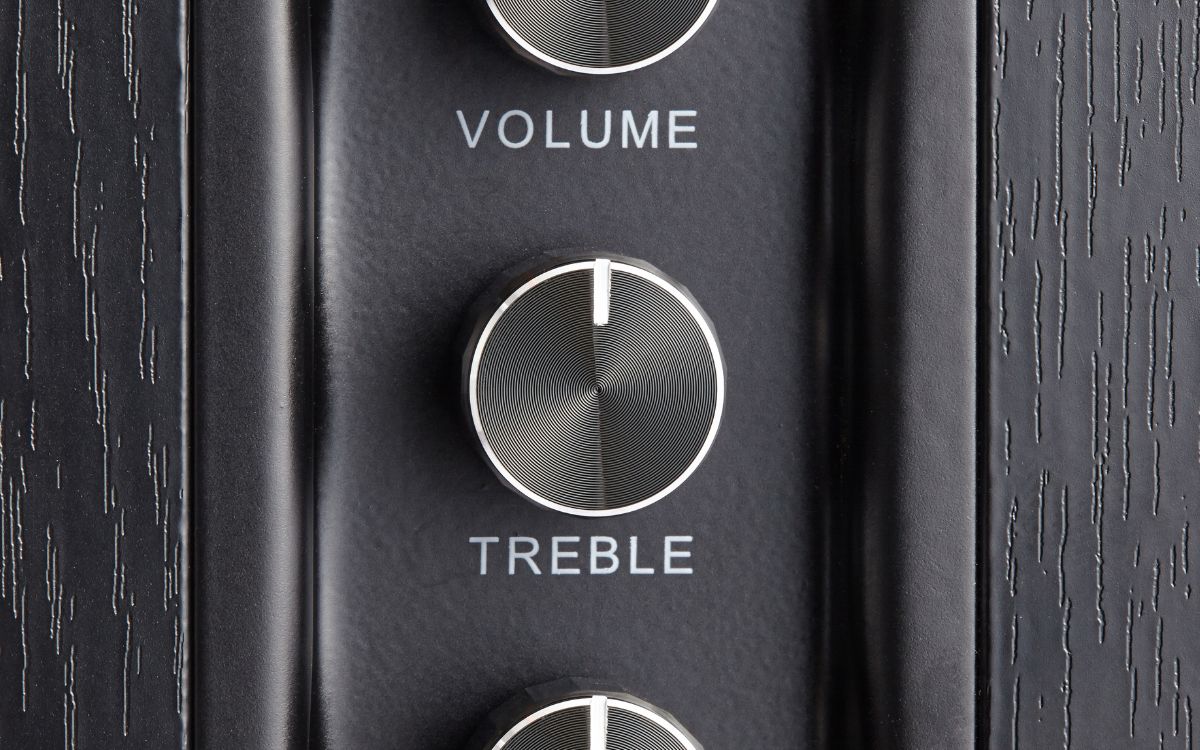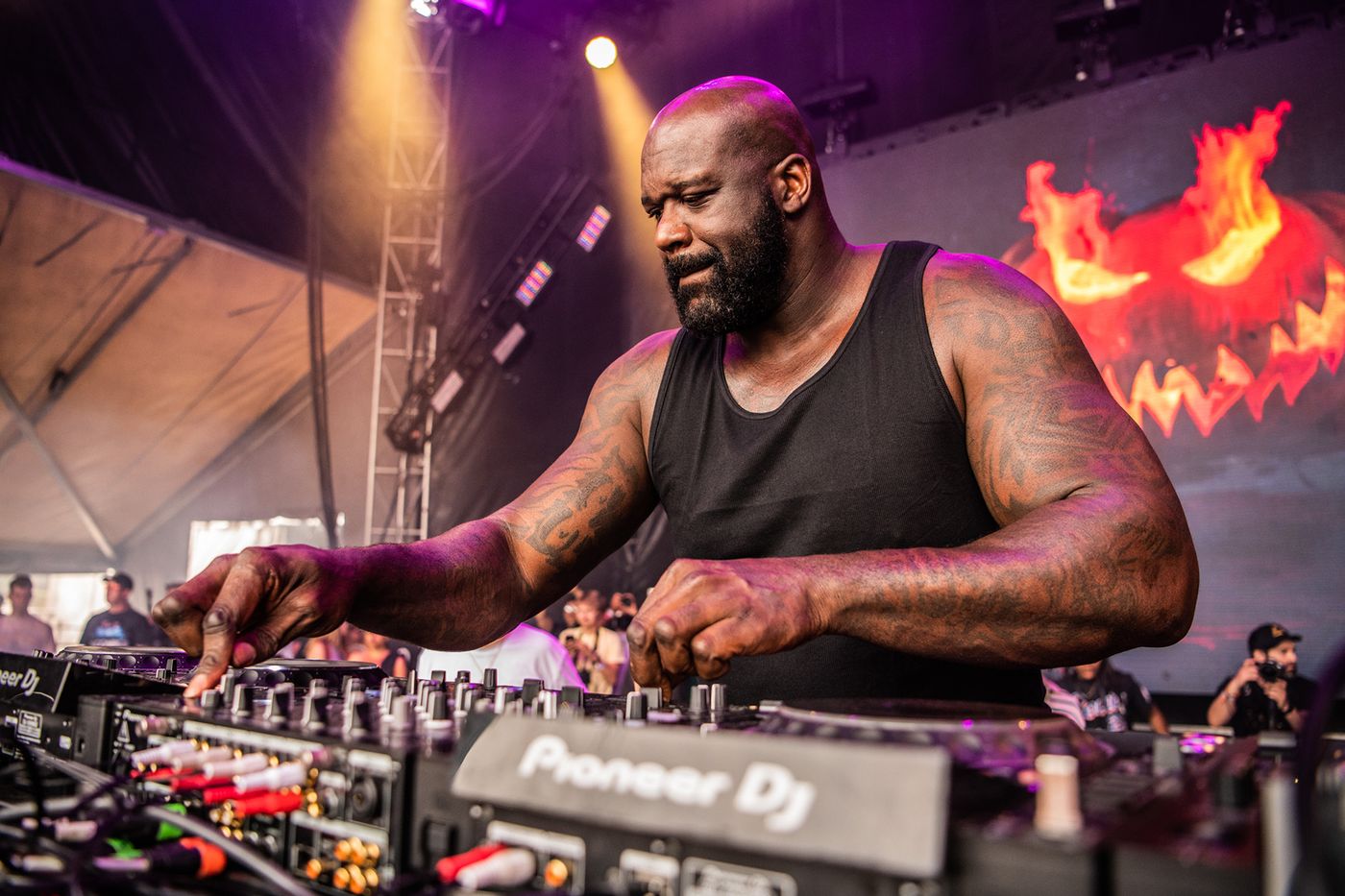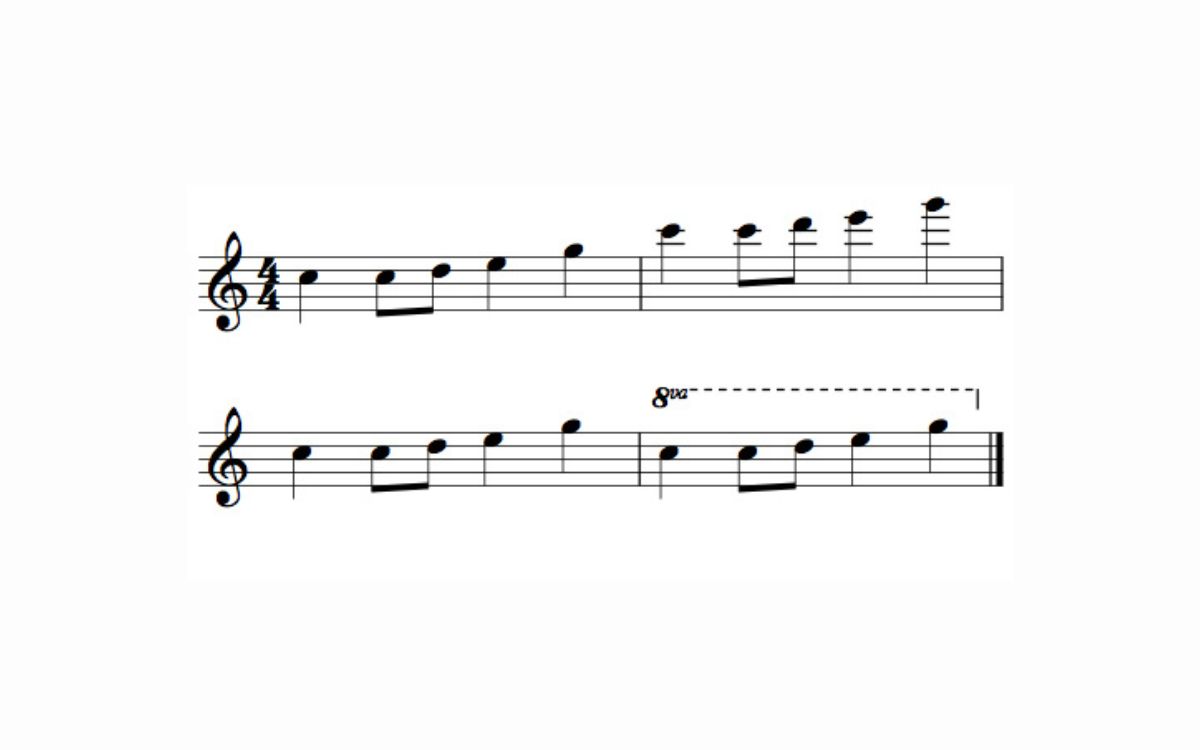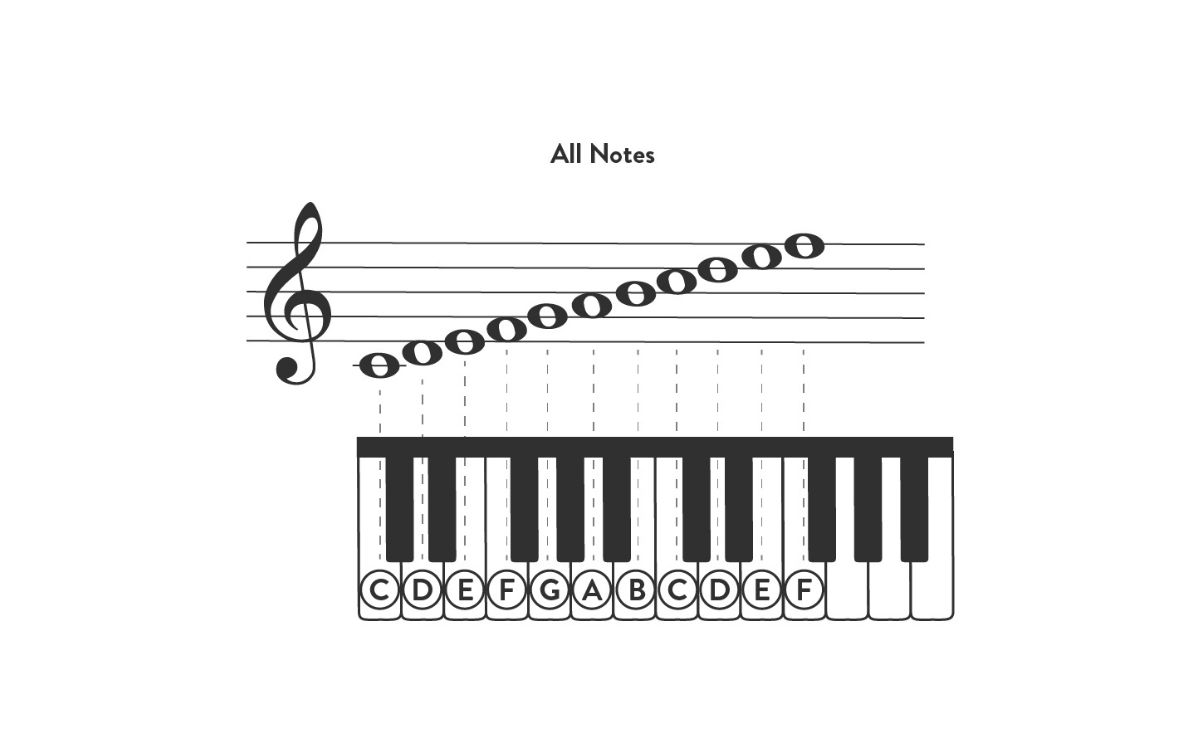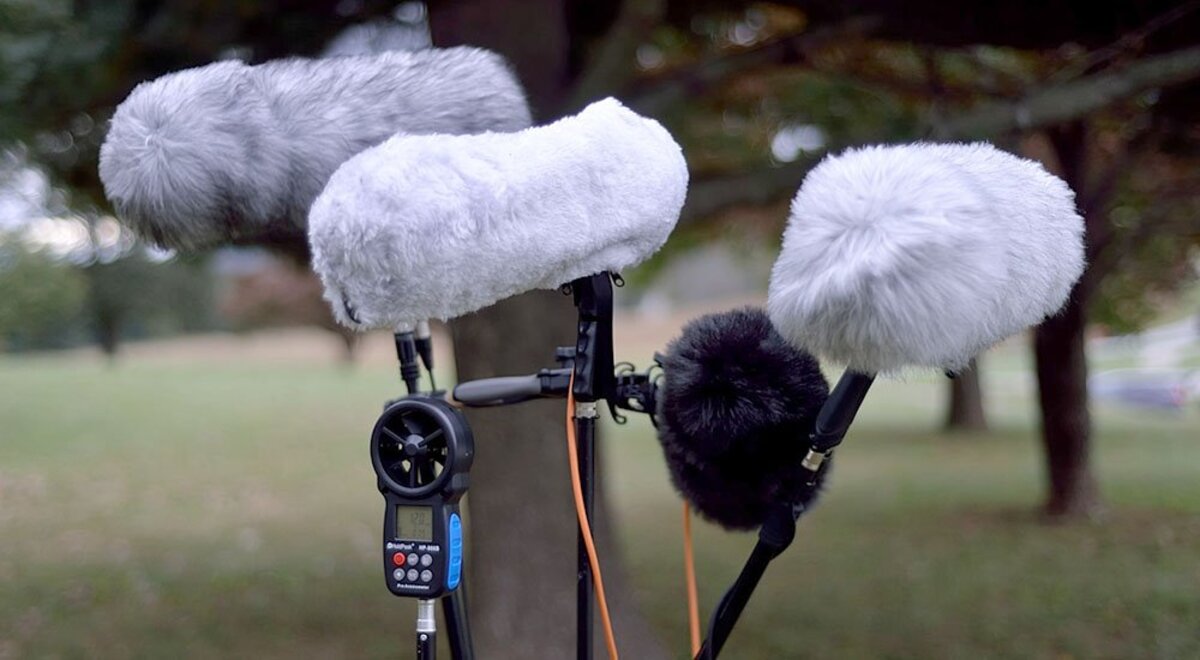Home>Production & Technology>Treble>What Does A Treble Booster Do


Treble
What Does A Treble Booster Do
Modified: March 7, 2024
Discover how a treble booster enhances your guitar sound. Boost your treble frequencies for a brighter tone and increased clarity.
(Many of the links in this article redirect to a specific reviewed product. Your purchase of these products through affiliate links helps to generate commission for AudioLover.com, at no extra cost. Learn more)
Table of Contents
Introduction
A treble booster is a widely used audio effect that is specially designed to enhance and boost the high-frequency tones or treble in an audio signal. It is commonly used in the world of music and audio production to add clarity, brightness, and definition to the sound. Whether you are a professional musician, a passionate hobbyist, or simply a music lover, understanding the fundamentals of a treble booster can greatly enhance your overall listening experience.
By effectively boosting the treble frequencies, a treble booster can breathe new life into your audio, making it more vibrant and cutting through the mix. Whether you are playing a guitar solo, adding sparkle to vocals, or reinvigorating a recorded track, a treble booster is an invaluable tool that can transform your sound.
In this article, we will delve into the world of treble boosters and explore their functions, benefits, different types, popular brands, and offer essential tips to maximize your usage. Whether you are a guitarist, a sound engineer, or simply curious about this audio effect, keep reading to unravel the secrets of the treble booster and take your sound to new heights.
Definition of a Treble Booster
A treble booster is an audio effect pedal or device that is designed to selectively boost the high-frequency or treble components of an audio signal. It is commonly used in music and audio production to add brightness, clarity, and presence to the sound.
The primary function of a treble booster is to amplify the high-frequency tones, typically above 2 kHz, while maintaining a relatively balanced frequency response across the audio spectrum. It achieves this by boosting the signal level of the treble frequencies, which can help cut through the mix and make the sound more articulate and defined.
One of the key features of a treble booster is its ability to shape the tone of an instrument or audio signal without drastically altering its fundamental characteristics. Unlike other types of tone-shaping devices, such as equalizers, treble boosters primarily focus on boosting the high frequencies rather than adjusting the overall frequency balance.
Treble boosters are commonly used in various musical applications, particularly in guitar playing. They are favored by guitarists who want to emphasize the treble frequencies and add a touch of sparkle to their tone. By using a treble booster, guitarists can achieve a more cutting sound that stands out in solos, chords, and arpeggios.
It is important to note that a treble booster is not solely limited to guitarists. It can also be used in other musical contexts, such as audio recording and mixing, where adding brightness and presence to vocals, drums, or other instruments is desirable.
Overall, a treble booster is an essential tool in the arsenal of musicians and audio enthusiasts who seek to enhance the high-frequency content of their sound, adding clarity and artistic expression to their music.
How Does a Treble Booster Work?
Understanding how a treble booster works can shed light on its function and help you harness its power to elevate your sound. Essentially, a treble booster operates by selectively amplifying the high-frequency components of an audio signal.
Most treble boosters utilize a combination of active components, such as transistors or operational amplifiers (op-amps), and passive components like capacitors and resistors. These components work together to shape the frequency response and boost the treble frequencies.
When the audio signal enters the treble booster, it undergoes several stages of amplification and filtering. The input stage of the treble booster is responsible for receiving the audio signal and preparing it for further processing. At this stage, the signal may be buffered to ensure that it can drive the subsequent amplification stages effectively.
The heart of the treble booster lies in its tone control circuit. This circuit applies selective amplification to the high-frequency components of the audio signal. It accomplishes this by using specific values of capacitors and resistors that allow certain frequencies to pass through while attenuating others.
Typically, treble boosters utilize a simple filter known as a high-pass filter. This filter allows the high-frequency content to pass through while cutting off or reducing the lower frequencies. Depending on the specific design of the treble booster, the cutoff frequency of the high-pass filter may vary, influencing the overall tonal response of the pedal.
As the audio signal passes through the tone control circuit, the treble frequencies are boosted, giving them more prominence in the overall mix. The boosted signal is then further amplified to an appropriate level, ensuring that it can drive other pedals or the amplifier effectively.
It is worth noting that different treble booster designs may incorporate various additional features, such as gain controls, tone shaping controls, and bypass options. These features offer further flexibility in tailoring the treble boost effect to suit individual preferences and musical styles.
Overall, the treble booster effect is achieved by selectively amplifying the high-frequency content of an audio signal, reshaping its frequency response, and injecting clarity, brightness, and definition into the sound.
Benefits of Using a Treble Booster
Using a treble booster as part of your musical setup can offer a range of benefits that can greatly enhance your sound and playing experience. Let’s explore some of the key advantages of incorporating a treble booster into your rig:
- Enhanced Clarity and Definition: One of the primary benefits of using a treble booster is that it adds increased clarity and definition to your sound. By boosting the high-frequency tones, a treble booster helps cut through the mix, making your playing more articulate and distinct.
- Brighter and Sparkling Tone: If you’re looking to add brightness and sparkle to your guitar tone, a treble booster is an excellent tool. It can bring out the shimmering harmonics and upper frequency harmonics, giving your sound that extra brilliance and presence.
- Solo and Lead Guitar Emphasis: The treble booster is particularly favored by guitarists for solo and lead playing. It can help make your solos stand out by boosting the high-frequency notes, adding sustain, and making your guitar sing with cutting clarity and projection.
- Mix Balance and Presence: Treble boosters aren’t limited to guitar applications only. They can also be used in audio mixing and recording to enhance the presence and brightness of vocals, drums, or other instruments. They provide a tool to shape the overall balance and character of the mix.
- Versatility and Tonal Shaping: Treble boosters come with various control options that allow you to shape your tone according to your preferences. With adjustable gain, tone controls, and different tonal profiles, treble boosters offer versatility and the ability to dial in the perfect sound for your musical style.
- Compatibility with Other Pedals: Treble boosters work well in conjunction with other effect pedals. They can serve as a foundation to shape your signal before cascading into other effects like overdrive, distortion, or modulation pedals, resulting in a more detailed and responsive signal chain.
Ultimately, using a treble booster can elevate your sound, whether you’re looking for a brighter guitar tone, a more defined mix presence, or a versatile tool for tonal shaping. It is a valuable asset for any musician or audio enthusiast who values clarity, articulation, and sonic excellence.
Different Types of Treble Boosters
Treble boosters come in a variety of designs and configurations, each offering its own unique sonic characteristics and tonal possibilities. Let’s take a look at some of the most common types of treble boosters:
- Germanium Treble Boosters: These treble boosters utilize germanium transistors for their amplification stages. Germanium-based boosters are known for their warm and vintage character, providing smooth and musical treble enhancement. They can add a touch of vintage mojo and are highly regarded for their ability to recreate classic guitar tones.
- Silicon Treble Boosters: Silicon-based treble boosters employ silicon transistors for their circuitry. They are generally characterized by their brighter and more aggressive sound compared to germanium boosters. Silicon boosters are known for their sharp and cutting treble response, making them suitable for styles that require more presence and bite.
- Hybrid Treble Boosters: Hybrid treble boosters combine both germanium and silicon transistors in their design, offering the best of both worlds. This hybrid approach results in a balanced and versatile tone, blending the warmth of germanium with the crispness of silicon. They provide a wide range of tonal options and can be well-suited for various playing styles and musical genres.
- Active EQ Treble Boosters: Active treble boosters incorporate active equalization circuits, such as op-amps, to shape the treble frequencies. These boosters often offer a wider range of tone-shaping controls, allowing you to adjust the boost level, tone, and even contour the frequency response. They provide greater flexibility and customization options for achieving your desired treble enhancement.
- Boutique Treble Boosters: Boutique treble boosters are handmade, high-quality pedals crafted by smaller, independent manufacturers. These pedals often feature unique circuit designs, premium components, and meticulous attention to detail. Boutique treble boosters cater to discerning musicians who seek exceptional sound quality, craftsmanship, and distinct tonal characteristics.
It’s important to note that the sonic characteristics of treble boosters can vary significantly based on factors such as the specific circuit design, component selection, and construction quality. It’s always recommended to try out different types and brands of treble boosters to find the one that best matches your sonic preferences and musical style.
Popular Brands and Models of Treble Boosters
When it comes to treble boosters, there are several reputable brands and models that have made a significant impact in the world of guitar gear and audio effects. Let’s explore some of the popular brands and models that are well-regarded by musicians and audio enthusiasts:
- Dallas Rangemaster: The Dallas Rangemaster is a legendary treble booster that gained popularity in the 1960s. Used by guitarists like Eric Clapton and Brian May, the Dallas Rangemaster is renowned for its distinctive tone and contribution to iconic guitar tones.
- Colorsound Power Boost: The Colorsound Power Boost is another classic treble booster that has been sought after by guitarists for decades. This pedal has been used by renowned guitarists such as David Gilmour and Tony Iommi, and is known for its smooth, creamy overtones and versatile tone shaping capabilities.
- Fulltone OCD: While primarily known as an overdrive pedal, the Fulltone OCD (Obsessive Compulsive Drive) also features a treble booster circuit. This versatile pedal offers a wide range of overdrive and boost sounds, including a boosted treble mode that delivers crisp and cutting high frequencies.
- Catalinbread Naga Viper: The Catalinbread Naga Viper is a popular modern take on the classic treble booster. It is designed to capture the tonal characteristics of the Dallas Rangemaster and offers additional tone-shaping options, making it suitable for a wide range of musical styles and playing preferences.
- Wampler dB+: The Wampler dB+ is a versatile treble booster that offers both clean boost and a treble boost function. It features a transparent and musical-sounding boost that enhances the high-end frequencies while maintaining the natural characteristics of your instrument or audio signal.
These are just a few examples of popular brands and models of treble boosters, and there are many other fantastic options available on the market. When choosing a treble booster, it’s essential to consider your own tonal preferences, playing style, and the specific sound you’re aiming to achieve.
Additionally, keep in mind that the popularity and availability of specific brands and models may vary over time. It’s always a good idea to research and explore various options to find the treble booster that best suits your needs and preferences.
Tips for Using a Treble Booster Effectively
Using a treble booster in your musical setup can greatly enhance your sound and add a new dimension to your playing. To help you make the most out of this versatile effect, here are some tips for using a treble booster effectively:
- Adjust the Gain: Experiment with different gain settings on your treble booster to find the sweet spot that suits your playing style. Higher gain settings can create more overdrive and saturation, while lower gain settings provide a cleaner boost with enhanced clarity.
- Consider Placement in Your Signal Chain: The placement of your treble booster in the signal chain can have a significant impact on your overall tone. Placing it before other overdrive or distortion pedals can result in a more pronounced treble boost, while placing it after can help shape the tone of your already distorted signal.
- Use it as a Solo Boost: Engaging the treble booster during solos can give your guitar playing that extra push and presence. Set the boost level to cut through the mix and add sustain and definition to your lead lines.
- Experiment with Tone Control: If your treble booster has tone control options, try adjusting them to sculpt your desired tone. Increasing the treble can add brightness and sparkle, while reducing it can yield a smoother and warmer sound.
- Combine with Other Effects: Get creative and experiment with combining your treble booster with other effects. Try using it in conjunction with overdrives, distortions, or modulation effects to achieve unique and dynamic sounds.
- Use it for Recording and Mixing: Treble boosters are not limited to live performance; they can also be highly effective in recording and mixing settings. Use them to add clarity and presence to vocals, drums, or other instruments in your mix.
- Take Advantage of Bypass Options: Many treble boosters come with true bypass or buffered bypass options. Consider the pros and cons of each and choose the option that optimizes signal integrity and eliminates unwanted noise in your particular setup.
- Listen and Experiment: Every treble booster and each musical context are unique. Take the time to listen attentively to the changes in your tone and experiment with different settings and combinations to fine-tune your sound.
Remember, the key to using a treble booster effectively is to experiment, trust your ears, and tailor the settings to your own personal preferences and musical style. Let your creativity guide you as you explore the sonic possibilities offered by this versatile effect.
Conclusion
Treble boosters are powerful tools that can transform your sound, whether you’re a guitarist, a sound engineer, or a music enthusiast. By selectively boosting the high-frequency components of an audio signal, treble boosters add clarity, brightness, and definition to your tone, allowing your instrument or vocals to cut through the mix with precision.
In this article, we have explored the definition and functionality of treble boosters, how they work, and the benefits they offer. We have also discussed the different types of treble boosters, ranging from vintage germanium and silicon designs to more modern and versatile options. Furthermore, we highlighted some popular brands and models that are renowned for their treble boosting capabilities.
To use a treble booster effectively, we provided tips such as adjusting the gain to suit your playing style, experimenting with placement in your signal chain, using it as a solo boost, and exploring tone control options. We also emphasized the versatility of treble boosters in recording and mixing applications, as well as their compatibility with other effects.
As a musician or audio enthusiast, incorporating a treble booster into your setup can add a new level of depth and expression to your sound. It allows you to shape and enhance the high-frequency content, creating a more dynamic and captivating sonic experience. Whether you seek a brighter guitar tone, improved mix presence, or a tool for tonal sculpting, a treble booster can be an invaluable asset.
So go ahead, explore the sonic possibilities, and unleash the power of the treble booster to elevate your music to new heights.

